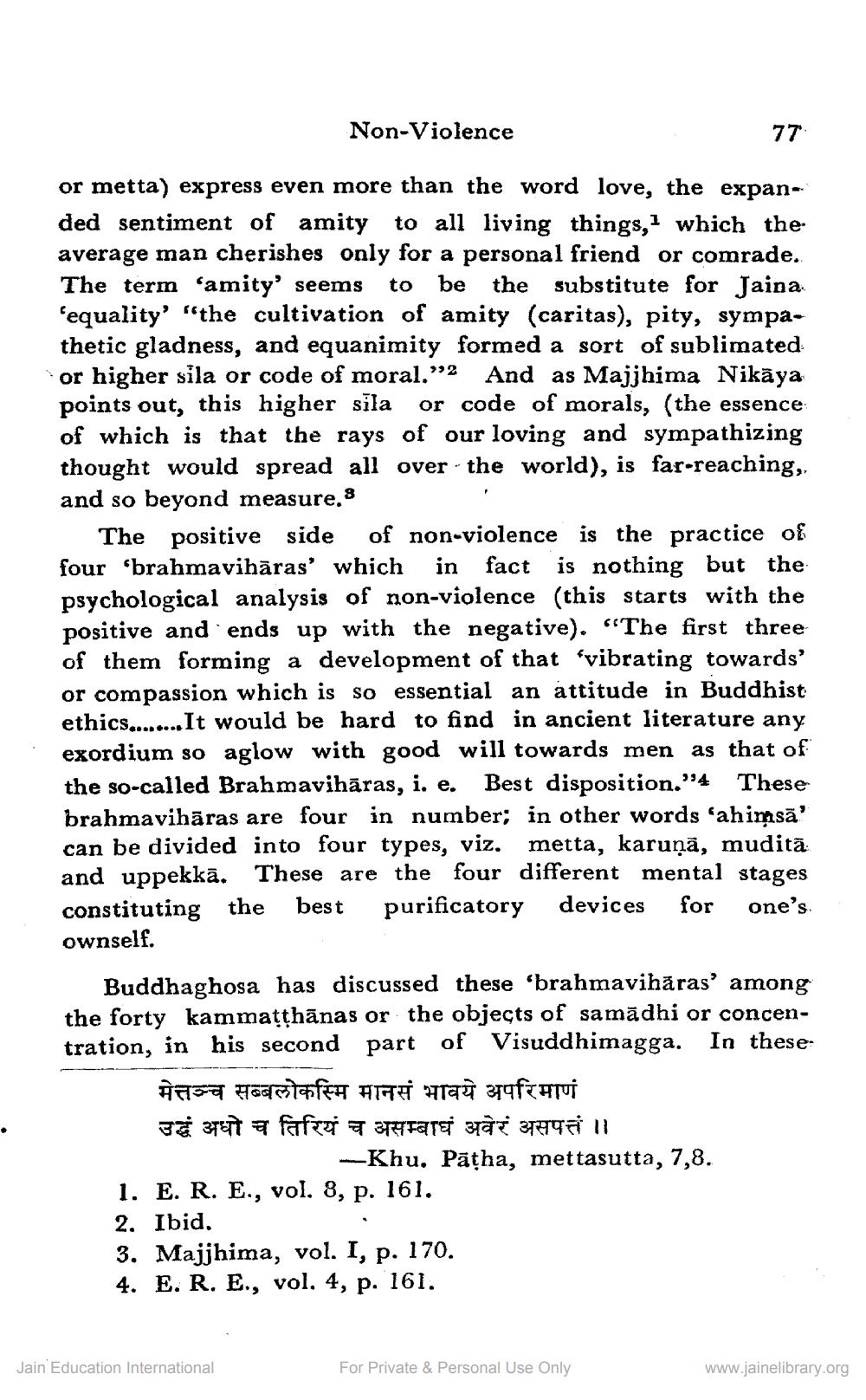________________
Non-Violence
or metta) express even more than the word love, the expanded sentiment of amity to all living things, which the average man cherishes only for a personal friend or comrade. The term 'amity' seems to be the substitute for Jaina 'equality' "the cultivation of amity (caritas), pity, sympathetic gladness, and equanimity formed a sort of sublimated or higher sila or code of moral."2 And as Majjhima Nikaya points out, this higher sila or code of morals, (the essence of which is that the rays of our loving and sympathizing thought would spread all over the world), is far-reaching,, and so beyond measure."
The positive side
of non-violence is the practice of four 'brahmavihāras' which in fact is nothing but the psychological analysis of non-violence (this starts with the positive and ends up with the negative). "The first three of them forming a development of that 'vibrating towards' or compassion which is so essential an attitude in Buddhist ethics........ It would be hard to find in ancient literature any exordium so aglow with good will towards men as that of the so-called Brahmavihāras, i. e. Best disposition."4 These brahmavihāras are four in number; in other words 'ahimsa' can be divided into four types, viz. metta, karuņā, muditā and uppekka. These are the four different mental stages best purificatory devices for constituting the
one's
ownself.
Buddhaghosa has discussed these 'brahmavihāras' among the forty kammaṭṭhānas or the objects of samadhi or concentration, in his second part of Visuddhimagga. In these
मत्तञ्च सब्बलोकस्मि मानसं भावये अपरिमाणं
उद्धं अधो च तिरियं च असम्बाधं अवेरं असपत्तं ॥
Jain Education International
77
-Khu. Pāṭha, mettasutta, 7,8.
1. E. R. E., vol. 8, p. 161. 2. Ibid.
3. Majjhima, vol. I, p. 170. 4. E. R. E., vol. 4, p. 161.
For Private & Personal Use Only
www.jainelibrary.org




